We look forward to returning to Art Basel Miami Beach at Booth G22 with a presentation of signature works by:
Kader Attia, McArthur Binion, Dominic Chambers, Mandy El-Sayegh, Teresita Fernández, Tom Friedman, Nicholas Hlobo, Lee Bul, Liu Wei, Liza Lou, Tammy Nguyen, Catherine Opie, Angel Otero, OSGEMEOS, Lari Pittman, Alex Prager, Calida Rawles, Robin Rhode, David Salle, Do Ho Suh, Mickalene Thomas, and Nari Ward
A selection of works are featured here, revealing conceptual and material connections between artists that transcend geographic, cultural, and aesthetic boundaries.
Liza Lou’s new works extend her exploration of issues of materiality, process, and labor. She addresses art historical traditions through her incorporation of materials such as canvas and oil paint and devices like stretcher frames. Rejecting the flatness of the picture plane, she creates a dynamic, dimensional surface, treating beads, thread, and paint as sculptural materials through a process of addition and subtraction. Challenging art historical conventions, her works inspire wonder in the transformation of the ordinary and mundane.

Newly Released Monograph
A comprehensive new monograph on the critically-acclaimed artist is now available, featuring contributions by Glenn Adamson, writer and curator; Julia Bryan-Wilson, Professor of Art History at Columbia University; Dr. Cathleen Chaffee, Chief Curator of Buffalo AKG Art Museum; Elisabeth Sherman, Assistant Curator at the Whitney Museum of American Art, New York; and a conversation between Liza Lou and renowned artist Carrie Mae Weems. Published by Rizzoli Electa.
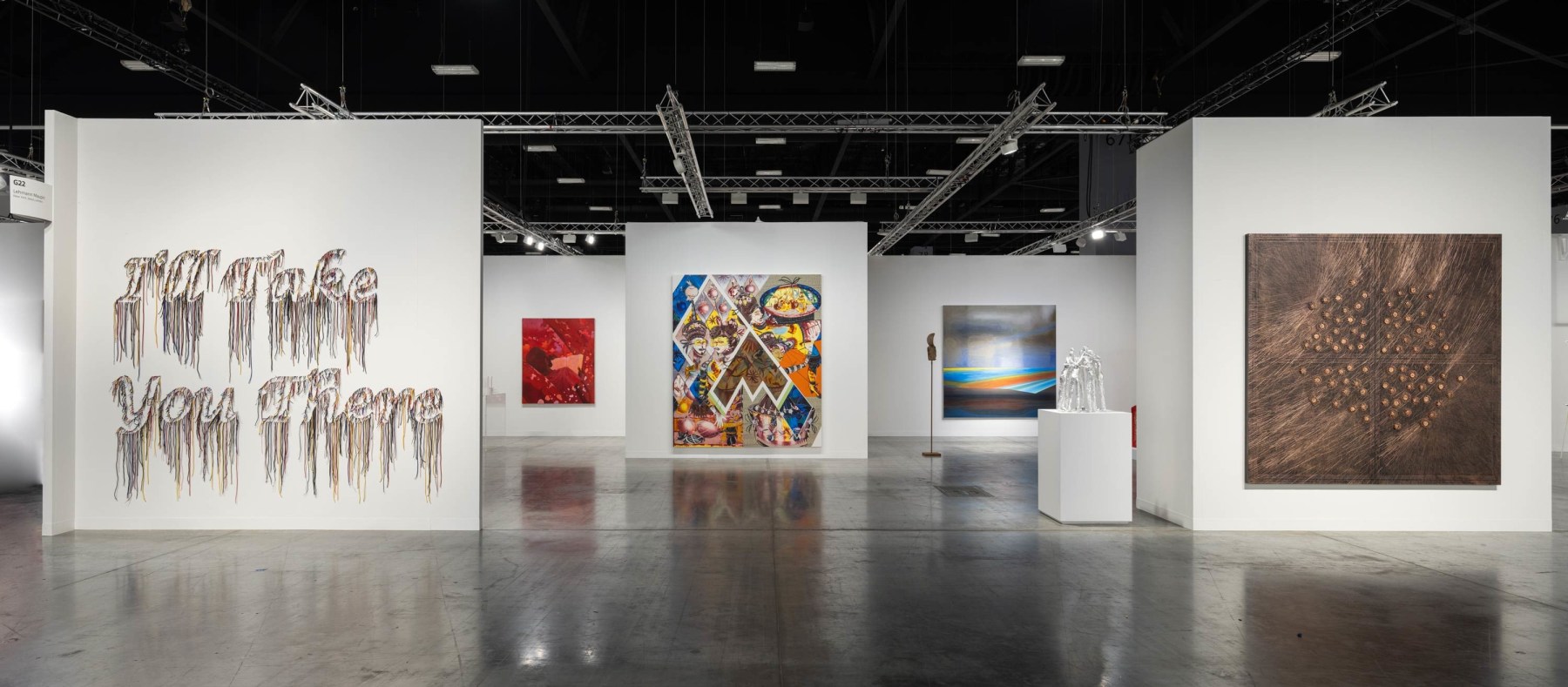
Over the course of his decades-long career, Lari Pittman has developed a unique visual aesthetic that has established him as one of the most significant painters of his generation. Pittman’s signature, densely-layered painting style includes a lexicon of signs and symbols (such as bells, eggs, animals, and ropes), a compilation of varied painting techniques, and a clear homage to the handmade, craft, and the decorative. Pittman creates complex compositions that mediate the tension between color, text, and imagery; landscape and decoration; and chaos and order with remarkable dexterity and often on a large scale, and the artist has an innate ability to create compositions in which each element within a painting is given equal space and significance.
The Museo Jumex in Mexico City is currently presenting Lo Que Se Ve, Se Pregunta, a major solo exhibition of Pittman’s work, on view through February 26 (pictured below).
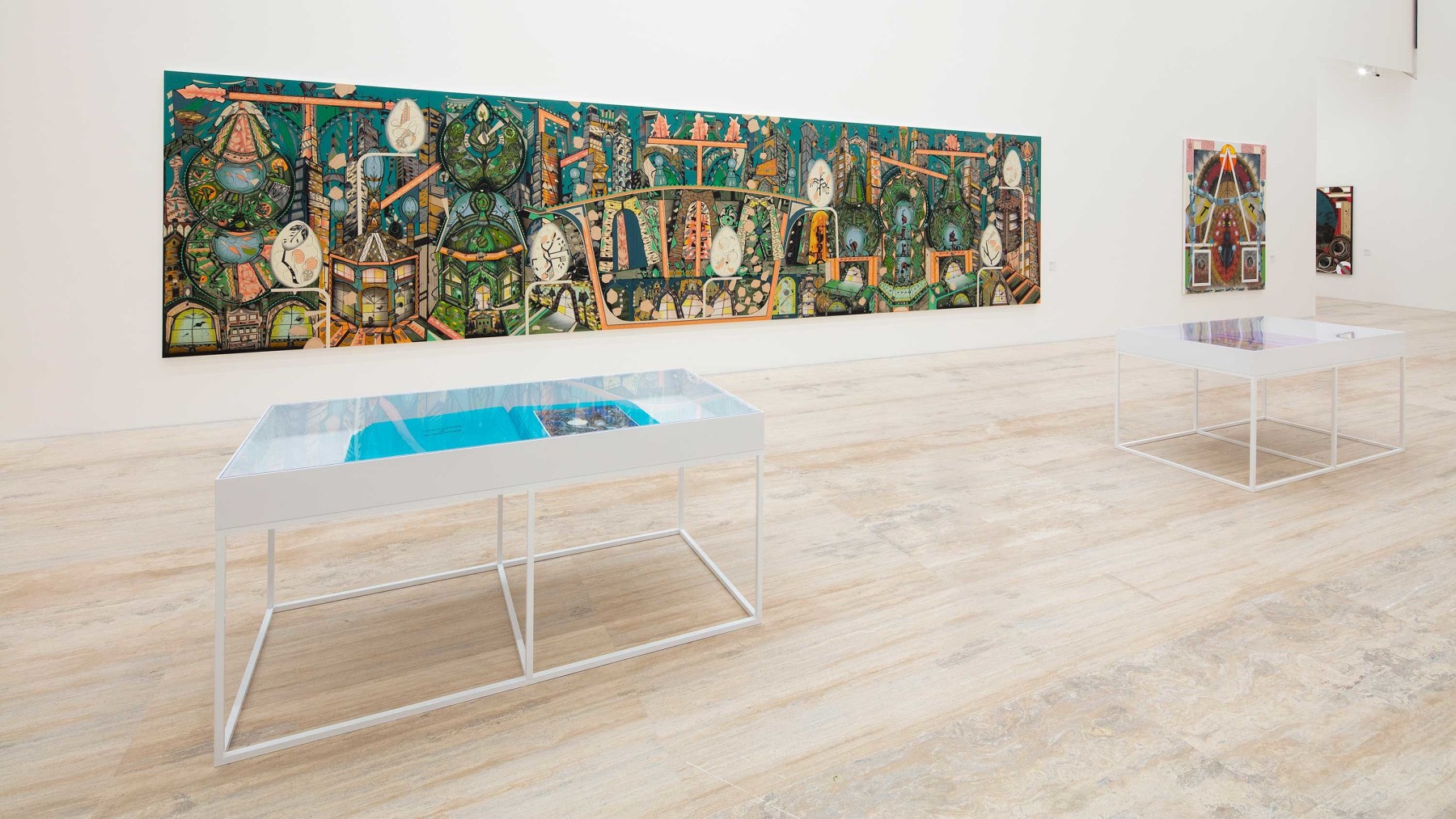
Catherine Opie is known for her powerfully dynamic photographs that examine the ideals and norms surrounding American identity. In her portraits and landscapes, Opie lends ambiguity to both identity and place, whether by unsettling gender norms in portraits or or by exaggerating distance, cropping, or blurring her landscapes.
A recent series, Monument/Monumental expands on her large body of work investigating the American landscape. Shut works during the summer of 2020 while Opie was on a cross-country road trip through the western and southern United States, Monument/Monumental bears poetic witness to a pivotal moment of protest in US history.
Born and raised in South Africa and currently based in Berlin, Robin Rhode is best known for his multi-panel works that deftly combine photography, performance, wall painting, and drawing. Negotiating the urban landscape, his work often depicts silhouetted figures interacting with carefully composed, highly geometric wall paintings that the artist paints in public spaces in Johannesburg and Berlin.
A solo exhibition of new work by Rhode, entitled African Dream Root, will be presented at our New York gallery in January.
Do Ho Suh’s Inverted Monument (2022), made of extruded thermoplastic polyester, advances the artist’s longstanding interest in the language of public monuments, as well as the authority and agency of “the artist’s hand.” The work draws on generalized concepts of an “ideal” monument in the lexicon of Western statuary; the figure is modeled on a cross-section of data taken from public sculpture in the United Kingdom. Here, Suh turns this idea literally and figuratively on its head—the commemorative figure hangs upside down inside the translucent and traditionally proportioned pedestal itself. Considering what and who we chose to elevate in civic spaces, Inverted Monument lays bare public perceptions of the power structures upheld by such visual traditions.
The Museum of Contemporary Art Australia in Sydney is currently presenting a major solo exhibition of Suh’s work, on view through February 26 (pictured below).
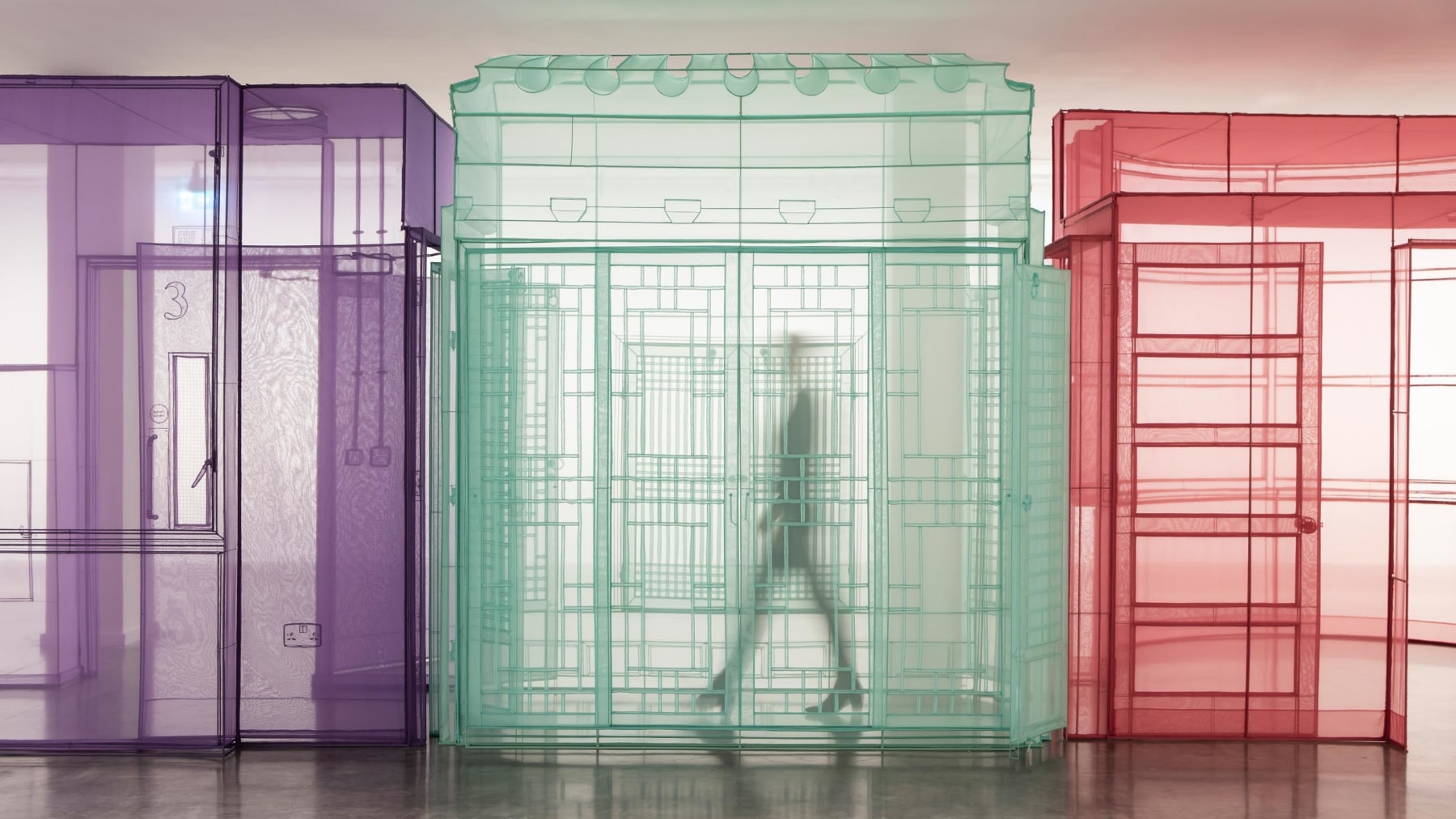
Part of his ongoing exploration of the copper panel as a medium, the works in Nari Ward’s Peace Walk series draw inspiration from city sidewalks and explore the street as a pictorial surface. With his series title, Ward references non-violent protest marches, often known as “peace walks,” and recovers city streets as sites of resistance and stages for transformation.
As he made these works, the artist was also particularly struck by the countless sidewalk memorials erected during the height of the Covid-19 pandemic. From these memorials, Ward culled found objects, such as candles, bottles, and stuffed animals, and was always careful to replace the objects he took with newly purchased substitutes. He placed these found objects on top of the copper panels to create distinct, ghostly outlines, and the resulting surfaces reveal these objects’ haunting traces.
Inquire about available works at Art Basel Miami Beach
Kader Attia grew up in Algeria and the suburbs of Paris. Drawing from his experience of living within two disparate cultures, he has developed a dynamic practice that examines the intricacies of social, historical, and cultural differences across the globe. Attia’s installations and sculptures offer a poetic yet pointed reading of the relationships between Western and non-Western cultures. He recently curated the 12th Berlin Biennale, making Attia the first artist to curate the exhibition since 2012.
Dominic Chambers creates vibrant paintings that simultaneously engage art historical models, such as color-field painting and gestural abstraction, and contemporary concerns around race, identity, and the necessity for leisure and reflection. Interested in how art can function as a mode for understanding, recontextualizing, or renegotiating one’s relationship to the world, the artist sees painting as a critical and intellectual endeavor, as much as an aesthetic one. A writer himself, Chambers draws inspiration from literature, especially Magical Realism and the writing of W.E.B. Du Bois, particularly Du Bois’ The Souls of Black Folk, and one of its central themes―the veil. A product of racial injustice that is a metaphorical lens through which Black bodies are observed and experienced, references to the veil appear throughout the artist’s work, whether in the large swaths of color that obscure the figures in his Wash Paintings series, or in his recurring use of a raindrop motif as both an active and passive element in his paintings.
At the fair, Chambers debuts his first sculpture, an acrylic work that functions as a compact playground. Inspired by his own formative experiences in the playground and other outdoor spaces, the work examines possibilities for the transformation of public space and explores how identities are shaped by our lived environments. Chambers recently presented What Makes the Earth Shake, a solo exhibition at the Tephra Institute of Contemporary Art in Reston, Virginia.
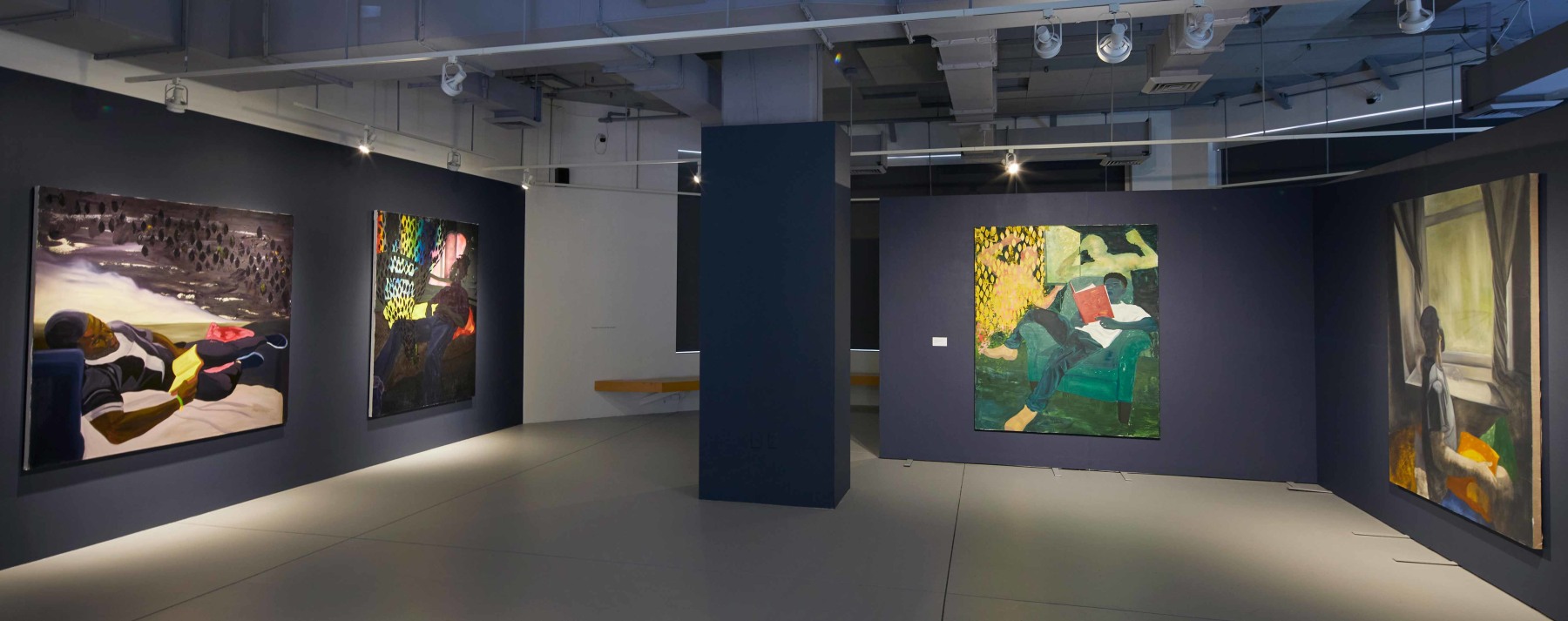
Mandy El-Sayegh’s highly process-driven practice is rooted in an exploration of material and language. Executed in a wide range of media, including densely layered paintings, sculpture, installation, diagrams, and sound and video, El-Sayegh’s work investigates the formation and break-down of systems of order, whether bodily, linguistic, or political. She is particularly interested in exploring the Part-Whole relationship–how something significant yet unpremeditated emerges and comes into being through various smaller, micro-interactions or repetitions. She physically demonstrates this by collaging disparate fragments, text, and found imagery, and layering them with materials like latex, rubber, and clay that mimic organic matter.
Our Seoul gallery is currently presenting El-Sayegh’s work in a two-person exhibition with Korean artist Keunmin Lee. Titled Recombinant, the show is on view through December 10 (pictured below).
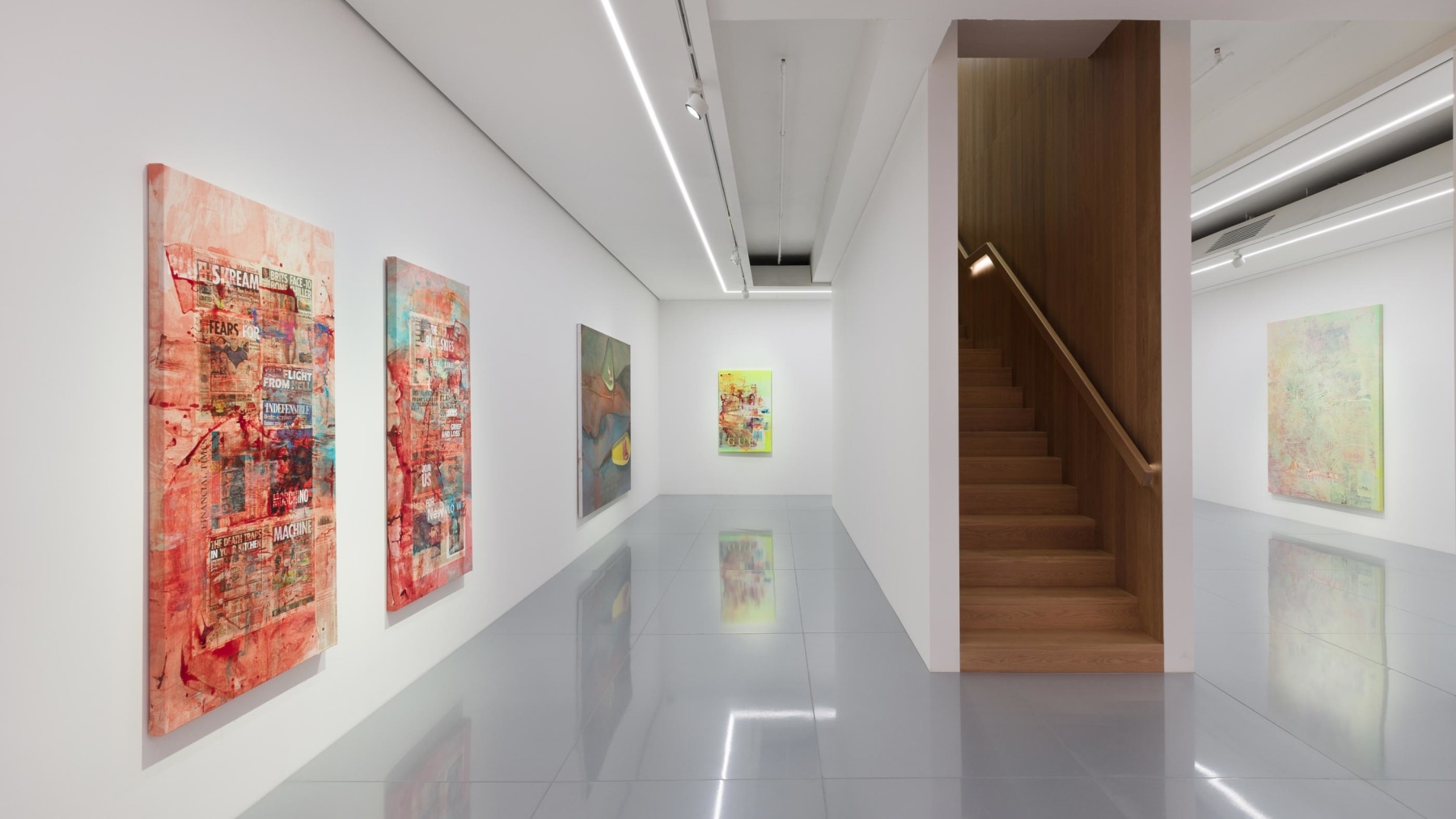
Tom Friedman is a conceptual artist known for his meticulously fabricated work, including sculpture, painting, drawing, video, and installation. Friedman investigates the concepts of perception, logic, and plausibility with a strong attention to detail. Since the early 1990s, Friedman has utilized an array of sophisticated processes to achieve a seemingly mass-produced appearance. His highly conceptual work engages both maximalist and minimalist aesthetics, as well as recalling those of Pop Art, and his practice is deeply engaged with the history of sculpture.
Friedman’s Family depicts a group of figures uniting in a huddle. Family reflects Friedman’s enduring interest in unconventional materials and his uncanny juxtapositions of everyday materials and fine art objects. With its intimate scale, the work also extends Friedman’s longstanding exploration of figuration and scale, and he offers new modes for perceiving and representing the human form that eschew traditional conventions.
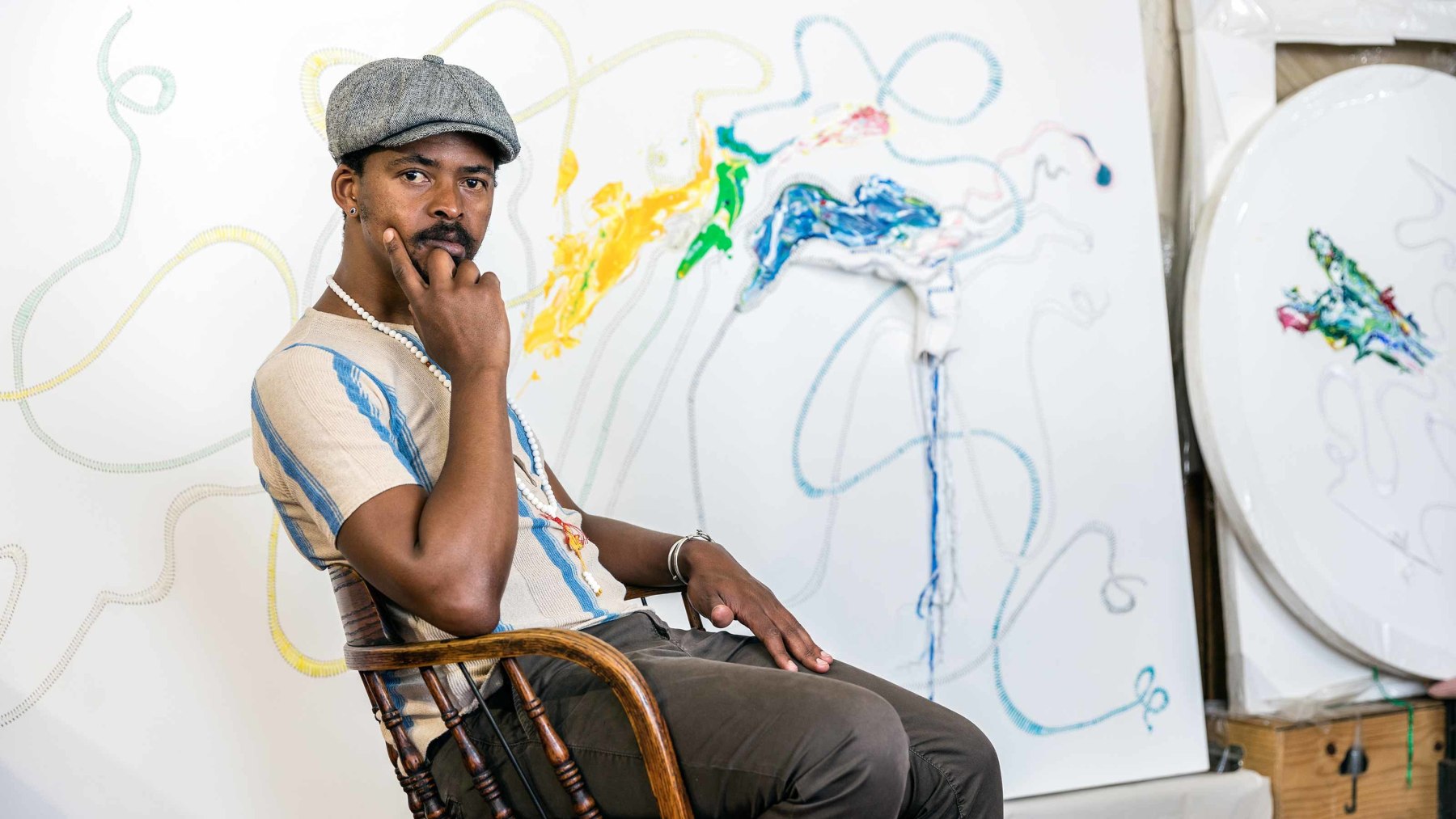
Best known for his weaving and stitching of metaphorically charged materials, such as colorful ribbon, leather, wood, and copper, Nicholas Hlobo (pictured above) creates composite objects that are intricate and seductively tactile. The results are highly evocative, and the artist combines anthropomorphic imagery and cultural symbols and traditions to create amalgamated forms that feel at once familiar, alien, and ancient.
Hlobo’s practice engages themes of self-discovery and explores the intersections of his race, gender, and cultural and sexual identity within the context of his South African heritage.
Inquire about available works at Art Basel Miami Beach
Tammy Nguyen creates paintings, drawings, artist books, prints, and zines that explore the intersections between geopolitics, ecology, and lesser-known histories. Nguyen’s work aims to unsettle, and the tension between the artist’s elegant forms and harmonious aesthetics often belies the nature of her content.
Conquest, pictured here, is from a series depicting the four horsemen of the apocalypse. The compositions are appropriated from an 1809 drawing of the horsemen by Italian artist Luigi Sabatelli. Nguyen has placed the horsemen into a tropical setting where wildlife obscures andeven consumes them. Throughout the work, playing cards and tiny helicopters flail in the wind. These symbols place the horsemen into the context of the Vietnam War—a frequent theme in much of the artist’s work—and suggest relationships between fate, desire, and capitalism.
Teresita Fernández creates work characterized by an interest in self-reflection and conceptual wayfinding. Her immersive, monumental works are inspired by a rethinking of landscape and place, as well as by diverse historical and cultural references. Often drawing inspiration from the natural world, Fernández’s practice unravels the intimacies between matter, places, and human beings. Her luminous works poetically challenge ideas about landscape by exposing the history of colonization and the inherent violence embedded in how we imagine and define locations. Her work questions power, visibility, and erasure in ways that prompt reflective engagement for individual viewers.
In her ongoing Dark Earth series, the artist transforms thousands of delicate slivers of raw charcoal into meticulously assembled relief images that suggest an expansive idea of place—from the ancient, historical, and subterranean to the futuristic and cosmic. Imagined as vertical cross-sections that span from underground geologic layers to heavenly realms, the works reveal bodies of subterranean water, invisible to the eye—embedded into the charcoal ground. Fernández has said “landscape is more about what you don’t see than what you do see,” and her deep consideration of landscape unapologetically plunges deep into the buried, often omitted or erased colonial violence that continues to shape our present-day perceptions of the people and places around us.
A member of the influential Pictures Generation, David Salle combines popular and commercial imagery, images made from direct observation, and a range of art historical references to create a personal pictorial language. His work features a sophisticated and highly intuitive approach to composition, one that suggests new associations and relationships between familiar and unfamiliar) subjects.
Salle’s multi-layered works do not rely on subject matter alone—his paintings pack an immediate formal impact and present multiple points of entry for the viewer. Built to draw the eye through and across the picture plane, they reward close looking and prolonged contemplation.
Inquire about available works at Art Basel Miami Beach
Coffee Bar (2022), from Alex Prager’s newest body of work, will be shown for the first time at Art Basel Miami Beach.
Directly responding to a period of cultural uncertainty and ambivalence, this new body of work urgently examines the collective will to exist and explores opportunities for empathy, participation, and action present both within art and everyday life. Concurrent to the fair, Prager’s solo exhibition Part Two: Run is on view at our seasonal Palm Beach gallery through December 11 (pictured below). This multi-part exhibition culminates in the debut of Prager’s ambitious new film Run at our New York gallery in January 2023.
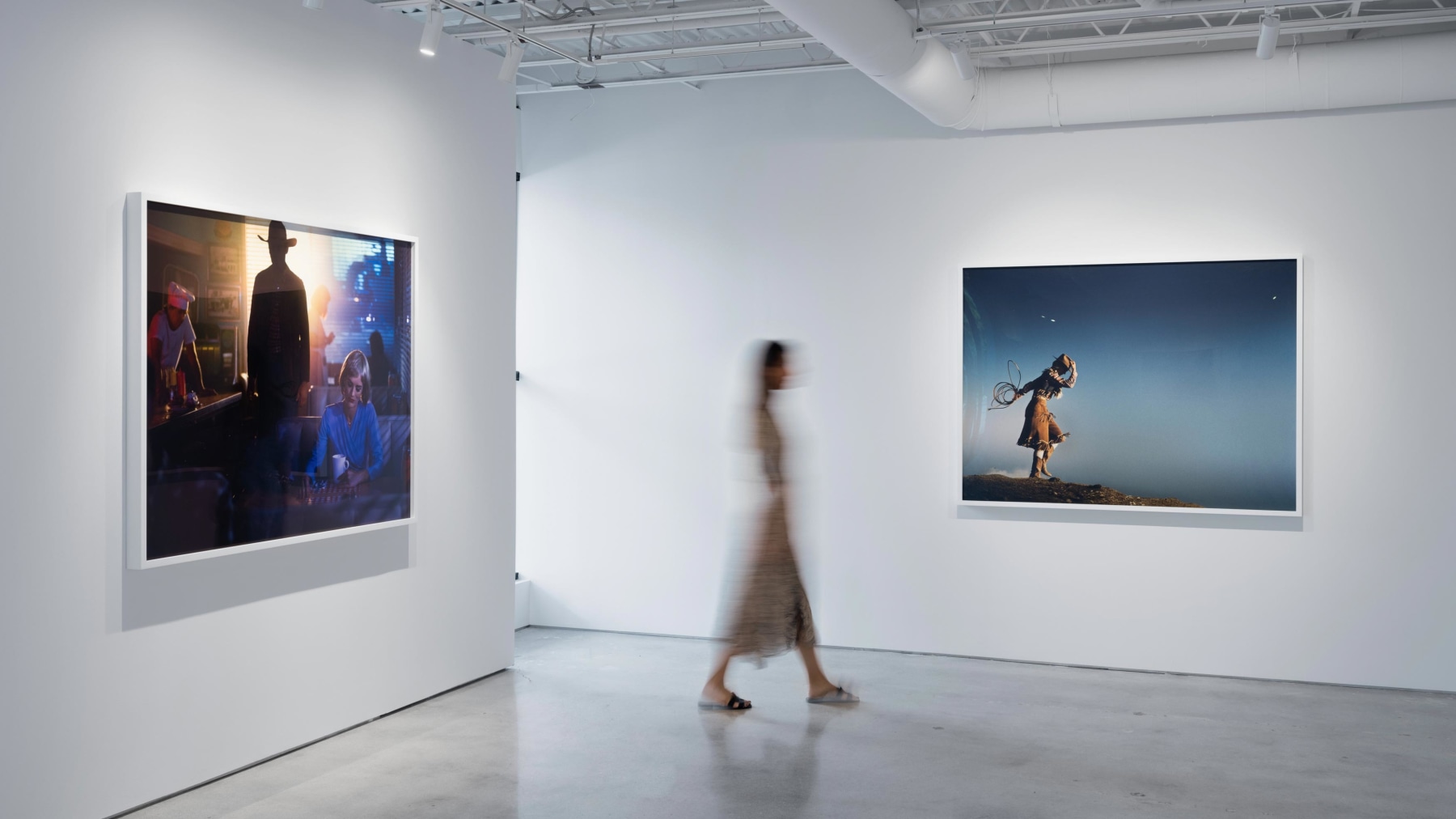
In her work, Calida Rawles merges hyper-realism with poetic abstraction. Situating her subjects in dynamic spaces, her recent work employs water as a vital, organic, multifaceted material, and historically charged space. Ranging from buoyant and ebullient to submerged and mysterious, Black bodies float in exquisitely rendered submarine landscapes of bubbles, ripples, refracted light and expanses of blue. For Rawles, water signifies both physical and spiritual healing as well as historical trauma and racial exclusion. She uses this complicated duality as a means to envision a new space for Black healing, and to reimagine her subjects beyond racialized tropes.
Rawles’ new jacquard tapestry was created in collaboration with Magnolia Editions in Oakland, California.
Lee Bul is recognized as one of the most radical and internationally regarded figures in contemporary Korean art. Her Perdu series of mixed media paintings blends biomorphic and cybertronic forms, vividly yet delicately rendered in acrylic paint and mother of pearl.
In a recent interview, Lee Bul told The New York Times: “My works are complex structures. When I make them, I consciously and unconsciously employ different emotions. The end results are fairly beautiful-looking but are not necessarily just beautiful. There are always three, four or more conflicting elements within them.”
Request a Preview for Art Basel Miami Beach:
—
Images from top: Header animation by Katharine Wimett; Cover and interior spreads from Liza Lou. Photos by Daniel Kukla; Installation view of Lehmann Maupin's booth at Art Basel Miami Beach 2022. Photo by Oriol Tarridas; Installation view of Lari Pittman: Lo Que Se Ve, Se Pregunta at Museo Jumex; Installation view of Do Ho Suh at the Museum of Contemporary Art Australia. © Do Ho Suh. Photo by AnnaKučera; Installation view of Dominic Chambers: What Makes the Earth Shake at the Tephra ICA. Photo by Luke Walters; Installation view of Mandy El-Sayegh and Keunmin Lee: Recombinant at Lehmann Maupin, Seoul. Photo by OnArt Studio; Nicholas Hlobo in his Johannesburg studio. Photo by Ilan Godfrey; Installation view of Alex Prager: Part Two: Run at Lehmann Maupin, Palm Beach. Photo by Oriol Tarridas;